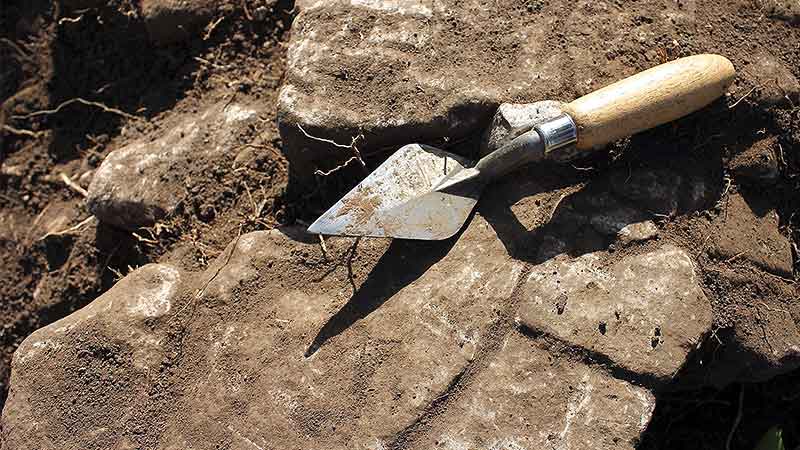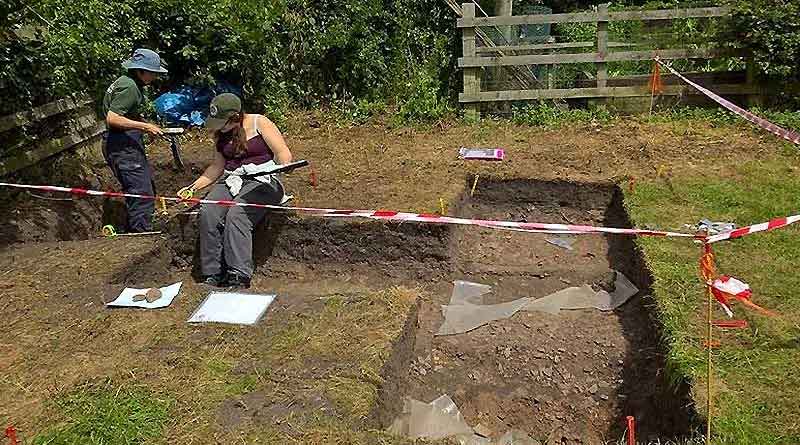Well! That was the year that wasn’t! Little did we suspect, when we met for TARG’s AGM in March last year, the magnitude of what was about to hit us a few days later. 2020 was TARG’s 10th anniversary and we were looking forward to yet another year of busy activity. Unfortunately, due to the Covid pandemic, TARG had to suspend its activities indefinitely, like just about every other society, club, and social group. It’s been a very difficult year for everyone, and I’m sure we’ve all missed field-walking, pot sorting and drawing, visits, digs … and even pot-washing! And, of course, the social contact of being part of a group with a shared interest in archaeology.
Let’s hope that in 2021 all the restrictions we’ve been living under, along with the vaccination programme, will pay off, and we can get back to normal life and our usual TARG activities. Unsurprisingly, this newsletter is a bit thin on news, but, hopefully, it shows that TARG is still very much alive and raring to go as soon as we can safely do so.
Archaeology by Accident (involving an unusual methodology!)
Having scoured the fields around Ticknall when field walking for TARG several times with never a sniff of a Flint, I never dreamed where I would actually find one.
I had made my mind up to make a wild flower bed in my garden. Because I was aware that wild flowers need poor soil, I decided to use the trimmings from the edge of my lawn. In order to get the soil in to usable condition I set about sieving it all.
My reward for all this labour (which used my TARG dig experiences) was to find in the sieve a beautiful Flint!
I live quite close to the A38 as it leaves Derby heading towards Burton and it has obviously been a main routeway before even the Romans used it.
It is a fascinating thing to think who made and used that piece of Flint all those years ago. And how lucky was I to find it! (from Sue Peberdy)
2020 AGM Speaker Report: Robert Bakewell and Agricultural Improvement in the 1700s
Mrs. Pat Stanley came to speak to us about the life of Robert Bakewell of Dishley Grange, Loughborough, following on from TARG’s survey of the irrigated meadow at Standleys Barn Farm. Mrs Stanley is a leading breeder of Longhorn cattle, the breed developed by Bakewell and kept on this farm by Sir George Crewe.
She explained to us the difference between his cattle and the unimproved ones, in the context of the Industrial Revolution. More food was needed for a growing population. Bakewell developed cattle that had a better distribution of meat on the carcass, and less bone, making meat more affordable to more people. He also developed the New Leicester sheep in the same way. Instead of selling his best breeding bulls and rams, he let them by the season so that other farmers could improve their herds and flocks.
Bakewell’s animals were among the first to have a recognised pedigree, because of their breeding value. He experimented with patterns of feeding, recording the details so he could learn what suited them best. On his farm he improved the pastures by selective watering at key times. He also dug a canal to supply the watering system, and it served to float crops such as turnips from field to farm where they arrived clean. Sir George was a great admirer of Bakewell and 30 or so years after Bakewell’s death in 1795, he followed his methods for finishing the cattle in the irrigated meadow. (from Janet Spavold)
‘How To Do Archaeology’
Last year, with the first ‘lock-down’ in full swing, I discovered that DigVentures was offering a free 6-week on-line course on ‘How To Do Archaeology’. With no prospect of a TARG dig, I jumped at the chance.
Having done some archaeology with TARG over recent years, I wanted to develop a better understanding of the process of running a project from start to finish. I wasn’t disappointed. The course was comprehensive and practical, covering initial desk research, project design, setting out of trenches, digging, recording, analysis and interpretation, reporting, and the treatment and archiving of finds and data. Each topic was presented in a way that was easily understandable but included loads of internet links to other resources, so you could investigate further. And there were lots of useful tips and checklists.
Participants were encouraged to put their learning into practice through planning, executing, and reporting on a garden test pit. I didn’t manage to do that last year; but with Covid restrictions still in place, I can see that will be a project for when the weather improves. DigVentures also set up a Facebook study group so that course participants could share their test pit progress and discuss anything of interest to the group.
DigVentures appears to be keen to make archaeology accessible to a wide audience. There are loads of DigVentures videos on Youtube, including site tours, lectures, ‘dig diary’ entries, and even pub quizzes! DigVentures also has a digital system of on-site recording called Digital Dig Team which allows real-time data on finds etc. to be immediately uploaded and made accessible via the internet (see www.digventures.com/digital-dig-team). Project reports and other publications are also available on the same site.
I gained a lot from the ‘How To Do Archaeology’ course and would recommend it to anyone who is a relative new-comer to the subject and wanting to develop their knowledge and competence. (from Elaine McCulloch)
A Way of Keeping Sane(?) during Lockdown
Archaeology is a transferable skill; what we’ve learned with TARG can be used at other places as well. The setting of two fields with potatoes this spring provided an ideal opportunity of seeing what could be found locally. No one has ever investigated the archaeology around here so it was a good opportunity. The main field was near houses so there were quite a lot of pot sherds although nothing like the quantity in Ticknall thank goodness. They would have been carted out with the night soil from the cesspits to manure the land.
Worked flint was found as well which was a bonus. As it was all local it was possible to cover quite a bit of the field over a few weeks, the ridges of the potatoes helped with more bare soil showing at first before the crop grew. Of course, none of this would have been possible if the field in question hadn’t had a footpath running through it; in this field, there are three!
The two photos above show the flint finds and the medieval pot finds. There were all the other usual Ticknall wares, Midland Yellow, Midland Purple, Black, Brown Glazed, and a little Cistercian ware as well as more modern wares from Stoke and South Derbyshire, brick pieces, tiles, and land drains. Just another 5 years to go before the next potato crop. (from Sue Brown)







